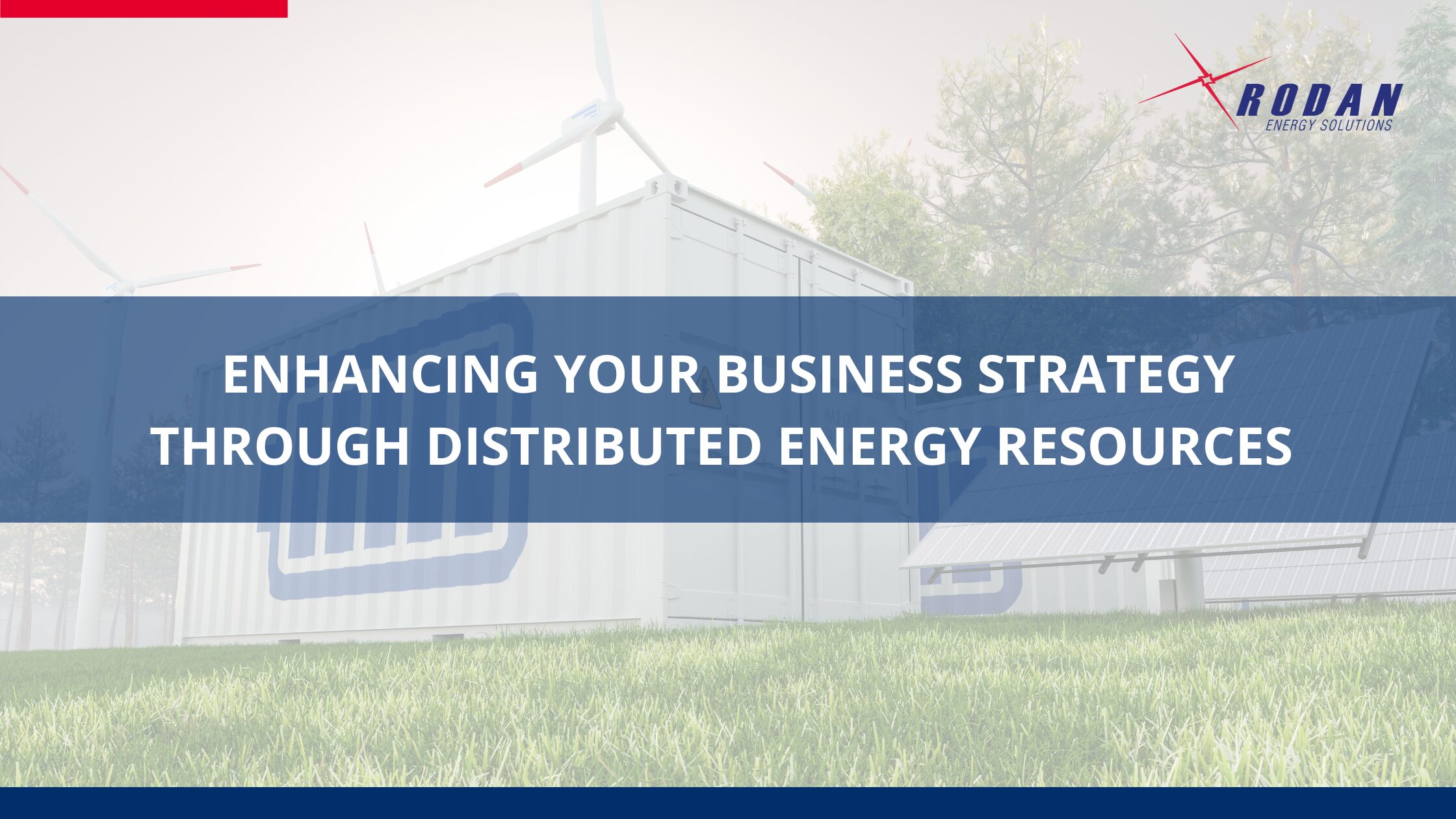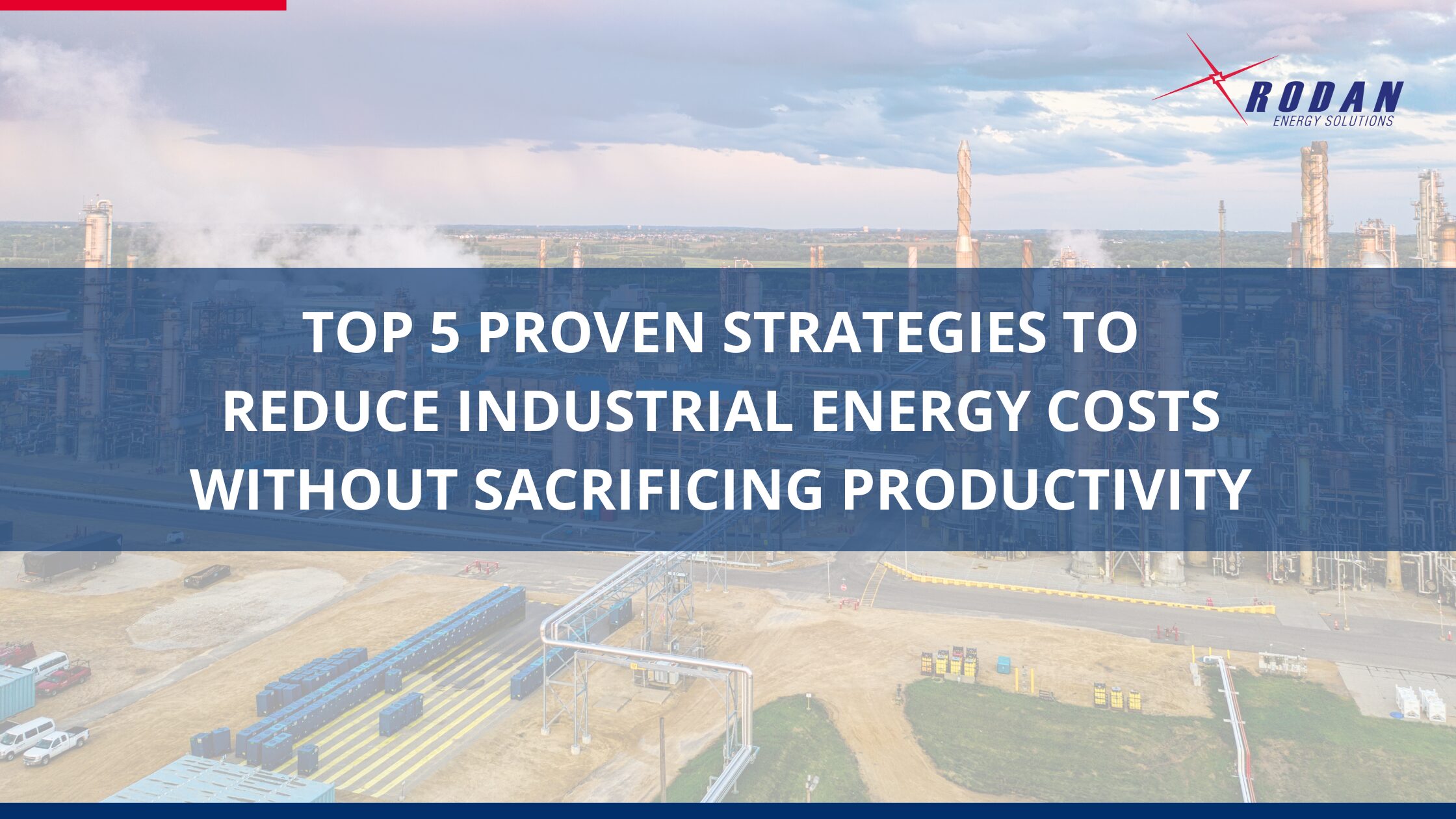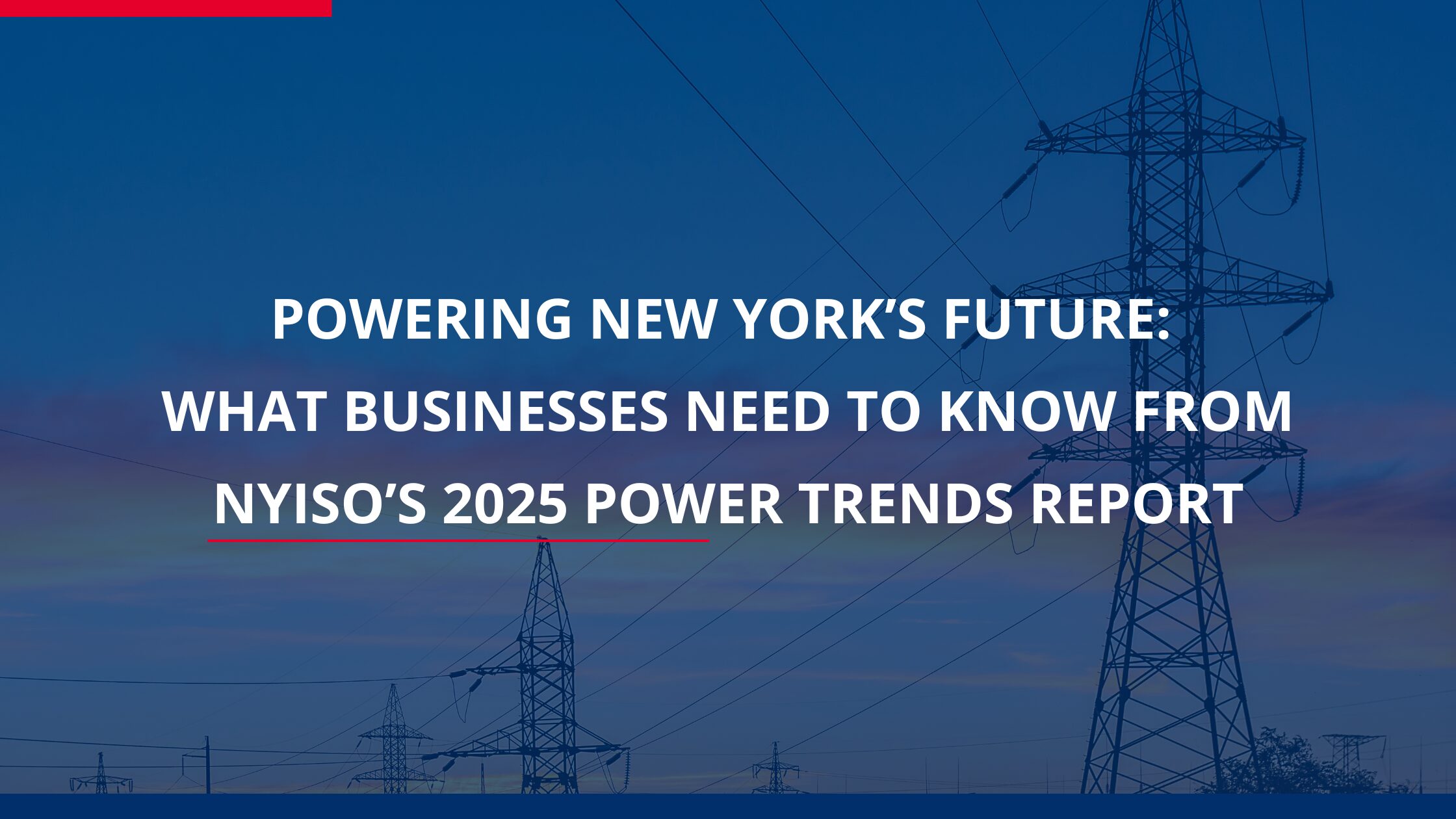As energy demands rise and climate concerns intensify, companies must reassess their business strategies to align with environmental goals, comply with regulatory requirements, manage operational costs, and appeal to eco-conscious consumers and investors. Sustainability is no longer optional but an essential component of a successful business model.
Distributed Energy Resources (DERs) are gaining prominence as a strategic solution to this challenge, having been recognized for their ability to:
- Enhance grid reliability and support efficient operation
- Lower system costs and defer the need for large infrastructure investments
- Reduce greenhouse gas emissions by integrating clean, renewable energy sources
- Empower customers to manage energy use, save on energy bills, and improve resilience1.
Below we explore the advantages of DERs and how businesses can incorporate them into their business strategy for sustainable long-term financial benefits.
What are Distributed Energy Resources (DERs)?
DERs are devices designed to generate, store, or manage electricity near the point of consumption. These devices are typically situated either within a customer’s premises, commonly referred to as behind-the-meter (BTM), or directly connected to the local distribution network, known as front-of-the-meter (FTM). DERs also include energy programs that provide an alternative to traditional solutions (i.e. poles and wires) to meet distribution needs, often referred to as Non-Wires Alternatives (NWA) 1.
Examples of DERs used in Commercial & Industrial (C&I) and Institutional applications include:
- Solar Photovoltaic (PV) Systems: Use semiconductor materials like silicon to convert sunlight into electricity. They can be modular, scalable, and installed on rooftops or ground mounted.
- Battery Energy Storage Systems (BESS): Store excess electricity for later use, improving grid reliability and enabling time-shifting of energy consumption. They are essential for integrating intermittent renewable sources like solar and wind.
- Thermal Energy Storage Systems: Store thermal energy (heat or cold) for later use, often in the form of chilled water, ice, or molten salts. They help shift energy use to off-peak hours and support HVAC systems in large buildings.
- Electric Vehicles (EVs) and Vehicle-to-Grid (V2G): EVs store electricity in batteries and can return power to the grid through V2G systems. This bidirectional energy flow supports grid stability and enables EVs to act as mobile energy assets.
- Demand Response (DR) Programs: Involve consumers reducing or shifting their electricity usage during peak demand periods in response to price signals or utility incentives. This helps prevent grid overloads and reduces the need for peaking power plants.
- Combined Heat and Power (CHP) Units: Also known as cogeneration or cogens, CHP units produce electricity and capture usable heat from the same energy source. This increases overall efficiency and reduces waste compared to separate heat and power generation.
- Diesel and Natural Gas Generators: Use internal combustion engines to generate electricity, often as backup power sources for critical loads. While reliable, they emit greenhouse gases and are less environmentally friendly than renewable alternatives2.
DERs vs. Traditional Energy Sources
Scale and Location: Traditional energy sources like nuclear, natural gas, and hydro are large-scale, centralized power plants connected to the high-voltage transmission grid. DERs are smaller and often connected BTM at a customer’s facility or FTM to the lower-voltage distribution system1.
Flexibility and Control: Traditional sources often operate as a baseload (constant output) or intermittent resource (like wind or solar without energy storage), with limited responsiveness to real-time grid needs. DERs can be flexible and responsive, capable of adjusting output or consumption based on price signals or dispatch instructions, which enhances grid adaptability.
Role in the Energy System: Traditional sources are essential for meeting base demand, while DERs are increasingly used to complement them during peak demand periods. This approach helps meet growing electricity needs, enhances reliability, and supports decarbonization objectives.
The Rise of DER Adoption
As electrification accelerates, ISOs are facing mounting pressure to expand supply and transmission infrastructure while maintaining reliability and affordability. DERs are gaining traction as a flexible, fast-to-deploy alternative to traditional infrastructure. Unlike large-scale power plants that require years of planning and construction, DERs can be implemented quickly to address immediate energy needs1.
DER adoption is also driven by the global push for decarbonization. By integrating intermittent sources like wind and solar with energy storage systems, DERs can enhance renewable generation efficiency, helping to decrease greenhouse gas emissions and support climate goals – making them a key enabler of the clean energy transition.
Moreover, DERs are being deployed to meet emerging system needs. They offer cost-effective solutions for providing capacity and energy, deferring investments in transmission and distribution infrastructure, and enhancing overall system reliability – all while contributing to emissions reductions.
Beyond environmental benefits, DERs empower energy consumers. They allow businesses to take control of their energy usage, lower costs, and actively participate in energy markets – shifting from passive consumers to active energy managers.
Benefits of Integrating DERs into Your Business
Energy Cost Savings
For consumers, one of the most compelling advantages of DERs is their ability to lower energy costs and provide additional revenue streams.
Direct Cost Savings: DERs can significantly reduce peak demand charges, which often make up a large portion of C&I and Institutional electricity bills. By generating or storing energy on-site, businesses can avoid purchasing electricity during high-priced periods of peak demand2.
Energy Program Participation: Energy efficiency programs are designed to deliver ratepayer savings by reducing overall energy and capacity needs. Businesses that integrate DERs can benefit from incentives, rebates, and programs like the Industrial Conservation Initiative (ICI), which reward decreased consumption during peak periods of electricity demand3.
Energy Market Participation: DERs empower consumers to actively participate in ISO electricity markets, such as the Independent Electricity System Operator (IESO) Capacity Auction and Operating Reserve. By leveraging assets like battery storage or demand response capabilities, businesses can offer their available capacity or flexibility to the grid during periods of high demand. In return, they receive payments from the IESO based on market clearing prices or standby availability2.
Energy Security
Protecting your business from power outages or grid failures is critical for efficient and profitable operations. Unexpected outages can lead to production halts, data loss, equipment damage, and financial losses. DERs offer a proactive solution by giving customers greater control over their energy consumption.
Energy Independence: DERs allow businesses to generate and store electricity on-site, reducing reliance on grid power. This is especially valuable during peak demand periods or when grid reliability is compromised.
Power Reliability & Quality: A key advantage of a BESS is providing backup power during grid outages to ensure continuous operations. When configured with an Uninterruptable Power Supply (UPS), a BESS can greatly improve power quality by mitigating electrical issues like voltage variations, frequency shifts, and harmonics. This setup ensures seamless power during brief outages or disturbances, provides stable power for critical operations, and supports energy cost optimization and resilience.
Sustainability
DERs offer businesses a practical way to meet their corporate social responsibility (CSR) and sustainability objectives.
Lower Carbon Emissions: DERs like Solar Photovoltaic systems generate electricity from renewable sources, reducing reliance on fossil fuels and cutting greenhouse gas emissions.
Energy Efficiency and Waste Reduction: Technologies like CHP units and BESS optimize energy use, minimizing waste and improving overall efficiency.
Support for Net-Zero Goals: By generating clean energy onsite and reducing grid dependency, DERs help businesses meet carbon reduction and sustainability targets.
Branding and Compliance: Adopting DERs demonstrates environmental leadership, enhancing brand reputation and helping meet regulatory or ESG requirements.
Grid Support and Community Impact: DERs can reduce strain on the grid and contribute to a more decentralized, resilient energy system, benefiting the broader community.
Steps to Integrate DERs into Your Business Strategy
1. Set Clear Goals and Key Performance Indicators (KPIs): Begin by establishing clear objectives for your DER project. These may include lowering energy costs, improving power reliability and quality, or achieving ESG targets. Establish KPIs to measure success, such as percentage reductions in energy expenditure or carbon footprint. These benchmarks will assist in guiding decision-making and tracking progress over time.
2. Assess Your Energy Needs: Conduct an energy audit to evaluate your consumption patterns, identify peak demand periods, and address vulnerabilities in power quality or reliability. Additionally, consider future growth projections and operational changes that might influence energy usage. A detailed power quality study can help identify issues such as voltage variations, frequency shifts, or harmonics, ensuring that your DER system is tailored to meet your specific needs.
3. Technical Considerations: Review available DER technologies and choose a solution that aligns with your goals and energy needs. For example, a BESS + UPS solution can enhance power reliability and quality; a rooftop Solar PV system can reduce your greenhouse gas (GHG) emissions; a CHP unit improves energy efficiency by utilizing waste heat for further applications. Evaluate your existing infrastructure to determine compatibility and any necessary upgrades to accommodate the chosen technologies.
4. Engage Energy Providers and Experts: Collaborate with energy service providers, utility companies, and consultants to ensure a smooth integration of DERs into your business operations. Experts can offer valuable insights into system design, regulatory compliance, and financial incentives such as tax credits or grants for renewable assets.
Learn How DER Solutions Drive Sustainability & Cut Costs
Distributed Energy Resources offer a practical and strategic solution for organizations striving to become more sustainable – both from an environmental and financial perspective – by enabling them to shift from being passive energy consumers to active energy managers.
By taking a structured approach, you can transform your energy strategy and leverage DERs to achieve your energy cost savings and sustainability goals.
Contact us on how we can help make sustainable, attainable for your business.
References:
- Power Advisory LLC. (2024, December 12). From Small to Mighty – Unlocking DERs to Meet Ontario’s Electricity Needs.
- Dunsky Energy + Climate Advisors. (2022, September 28). Ontario’s Distributed Energy Resources (DER) Potential Study: Volume I: Results & Recommendations. Prepared for the Independent Electricity System Operator.
- Independent Electricity System Operator (IESO). (2025, April 24). 2025 Annual Planning Outlook.




